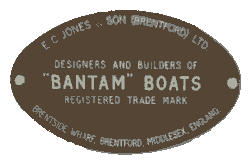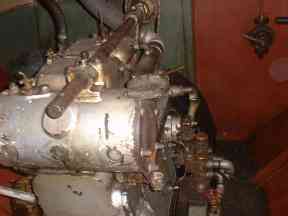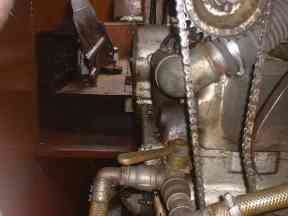 The Bantam IV tug was
completed in 1950 by E.C. Jones, and spent much of its working life in gravel
pits before being bought and restored for use as a working tug on the Kennet
and Avon Canal. The distinctive livery dates from this period. In 2000 the
Canal Museum Trust undertook an overhaul and repaint of the tug including a
spell in the dry dock at St. Pancras.
The Bantam IV tug was
completed in 1950 by E.C. Jones, and spent much of its working life in gravel
pits before being bought and restored for use as a working tug on the Kennet
and Avon Canal. The distinctive livery dates from this period. In 2000 the
Canal Museum Trust undertook an overhaul and repaint of the tug including a
spell in the dry dock at St. Pancras.
The Lister JP2 diesel engine which is as originally fitted requires to be started by hand - a difficult process which requires a mixture of muscle and skill. The engine is pictured below. The maker's plate reads "R A Lister (Marine Sales) Ltd. Dursley, Glos, England"
You can listen to two sound files to hear the engine. They are large
files in WAV format so will take some time to download especially if you have a
slower connection. Please be patient!
Engine Starting (879 kb)
The sound of the engine starting
Engine Working (555 kb)
The charactaristic whine as the engine works. Text
description


The Lister JP2 Engine is the original and is still in working order.





